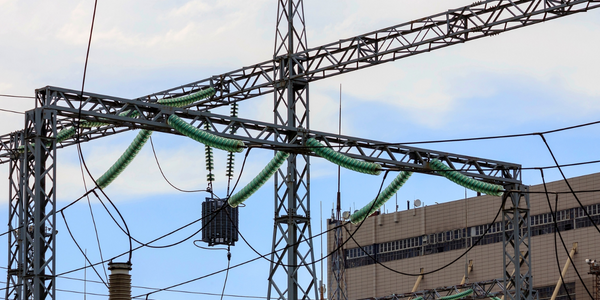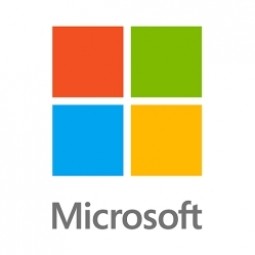Technology Category
- Infrastructure as a Service (IaaS) - Virtual Private Cloud
- Platform as a Service (PaaS) - Application Development Platforms
Applicable Industries
- Cement
- Electrical Grids
Applicable Functions
- Product Research & Development
Use Cases
- Demand Planning & Forecasting
- Time Sensitive Networking
About The Customer
Accenture is a global professional services and consulting agency that helps customers across 40 industries in more than 120 countries. The company started as the technology and business division of a 1950s American consultancy and has since grown to become the largest professional services provider in the world. Today, Accenture is headquartered in Dublin, Ireland and has 760,000 global employees, most of whom are client facing. The company is well into its digital transformation initiative, with 90 percent of its multi-vendor IT infrastructure in the cloud. Accenture believes in adapting and innovating, and is a top consumer of Microsoft 365 products.
The Challenge
Accenture, a global professional services and consulting agency, was facing a challenge common to many large organizations: the demand for IT solutions was greater than what could be met by the central IT team. The company wanted to democratize and evangelize a low-code platform to empower citizen developers to solve their own problems. Accenture recognized the value of Microsoft's Power Platform and aimed to grow its Center of Excellence (CoE) to offer all five Power Platform products at scale. The goal was to reduce IT demand for short-term applications by 30 percent, allowing professional developers to focus on more complex projects. The challenge was to change the culture by decentralizing what is traditionally seen as a centralized function, and to find a solution that would accelerate productivity and give employees an opportunity to solve problems in real time.
The Solution
Accenture adopted Microsoft's Power Platform and started its low-code journey about three years ago. The company formed a Power Platform CoE to combat the unmet demand within the central IT organization. The CoE team laid the foundation for how Accenture would adopt Power Platform within the organization. The team's goal was to define a strategic, incremental plan to deploy and support a citizen development platform for all Accenture employees. This plan outlined data governance strategies, best practices, and a roadmap of when they would turn on certain capabilities and connectors to reduce shadow IT and best serve their customers. Over the past few years, the CoE team has grown from 3 to 60 members and has rolled out Power Pages and Power Virtual Agents, marking a huge milestone as they have now enabled and are supporting all five Microsoft Power Platform products.
Operational Impact
Quantitative Benefit

Case Study missing?
Start adding your own!
Register with your work email and create a new case study profile for your business.
Related Case Studies.

Case Study
System 800xA at Indian Cement Plants
Chettinad Cement recognized that further efficiencies could be achieved in its cement manufacturing process. It looked to investing in comprehensive operational and control technologies to manage and derive productivity and energy efficiency gains from the assets on Line 2, their second plant in India.

Case Study
Hydro One Leads the Way In Smart Meter Development
In 2010, Ontario’s energy board mandated that time-of-use (TOU) pricing for consumers be available for all consumers on a regulated price plan. To meet this requirement, Hydro One needed to quickly deploy a smart meter and intelligent communications network solution to meet the provincial government’s requirement at a low cost. The network needed to cover Hydro One’s expansive service territory, which has a land mass twice the size of Texas, and its customers live in a mix of urban, rural, and remote areas, some places only accessible by air, rail, boat or snowmobile. Most importantly, the network needed to enable future enterprise-wide business efficiencies, modernization of distribution infrastructure and enhanced customer service. To meet these needs, Hydro One conceptualized an end-to-end solution leveraging open standards and Internet Protocols (IP) at all communication levels. The utility drew upon industry leaders like Trilliant to realize this vision.

Case Study
Selling more with Whirlpool
Whirlpool wanted to add connectivity to appliances and transform the company's relationship with customers. Traditionally, Whirlpool interaction with customers was limited to purchases made once every ten years. Connected washer and dryers provide exciting new features like remote management of start times and inter-machine communication.

Case Study
SAS® Analytics for IoT: Smart Grid
Companies face falling revenues, rising infrastructure costs, and increasing risk of outages caused by inconsistent energy production from renewable sources. Less money is coming in as more people and organizations take steps to curb their energy use. Utilities are paying more to maintain and build infrastructure due to increasing complexity, resulting from the rising number of intermittent and variable renewable energy sources connected in the distribution grid.

Case Study
Enel Secures Italian Power Generation Network
Electric energy operators around the world are working to increase the reliability and cyber resiliency of their systems. This includes Enel, a global power company that manages and monitors the Italian power grid. This grid:• Serves 31 million customers• Has a net installed energy capacity exceeding 31 gigawatts• Includes more than 500 power generation plants,including hydroelectric, thermoelectric, and wind• Is managed and monitored by Enel 24/7/365• Is operated by Terna, the Italian Transmission System Operator (TSO)Enel is responsible for the availability of the grid’s underlying ICS and industrial network. It also manages Regional Control Centers and Interconnection Centers which connect with the TSO. The TSO manages the flow of energy to the grid plus controls and remotely regulates the power generation of power plants, increasing and decreasing power production as required. The complex system of interaction and cooperation between Enel and the TSO has strong security implications as well as operational and business challenges.

Case Study
IoT based Energy Quality Availability Monitoring Solution
There were several challenges faced:Since this data would be in the public domain, accuracy and authenticity of this data were of paramount importance. It should be able to withstand scrutiny.It is challenging to build an appliance that can withstand a wide range of voltage fluctuations from as low at 90v to as high as 320v. Since the device would be installed in remote locations, its resilience was of paramount importance.The device would have to deal with poor network coverage and have the ability to store and re-transmit data if networks were not available, which is often the case in rural India. The device could store up to 30 days of data.The platform that deals with the data should be readily available and highly reliable and never lose a packet of data.







